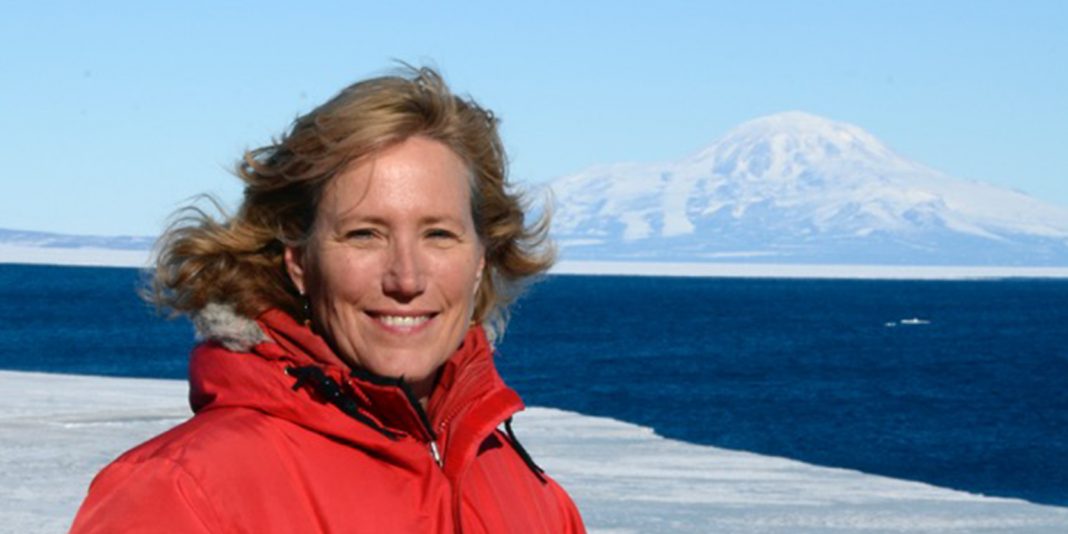7.30am Wake:
I wake up with a call from my family; being gone from the US for almost five months makes these calls that much more important. There is 24-hour daylight here during the summer so there is no dawn to wake up to (I haven’t seen a sunset here for four months!). I get up and take a shower; the United States Antarctic Programme (USAP) encourages showers only four times a week to conserve water. But today is a shower day. I only wash my hair every other shower day though, because the environment is so dry that everything dries out, including hair and skin.
8.30am Walk to work:
I’m dressed in civilian clothes, jeans and a sweater or long-sleeved shirt (occasionally a scrub top) because it is sometimes cold in the clinic and always cold outside. It is roughly a five-minute walk from my dorm to the McMurdo hospital/clinic. Even though it is the middle of summer here it is-17C° with the wind chill factor; the winds are at 50 kmh and snow is blowing around. So, as is the case every day here, I have my big red jacket on. ‘Big Red’, a large, down-filled jacket, is part of the extreme weather gear (EWG) handed out to everyone before they take the five-hour flight from Christchurch to McMurdo Station. I was hired by the current medical contract holder, the University of Texas Medical Branch (UTMB), to work for the USAP summer season as a flight nurse transporting patients with injuries or other needs off the ice and back to Christchurch. I have been a trauma, ED or ICU nurse for my entire career, since graduating from a nursing school in Maine. For the last 15 years I›ve been a flight nurse, working on a helicopter and on a jet. Coming to work in Antarctica was an adventure I could not pass up.
8.50am Start clinic:
Clinic hours change to meet the needs of the community, which includes New Zealand’s nearby Scott Base (about 80 people), McMurdo Station staff (about 1,000 people) and the crew of visiting ships. Right now our clinic hours are from 6.30am to 6.30pm and I work the later part of the shift. Although I’m hired as a flight nurse, I work every day at the clinic that I am not doing a medivac (medical evacuation). As I walk in, the phone is ringing, there are three patients who need to be seen, and the physician assistant (PA) and doctor (MD) are both busy seeing patients. For the next few hours, I am busy answering the phone and drawing blood for labs. I’m also caring for anyone who comes into the clinic – starting IVs as needed, getting vital signs, and giving meds as ordered. It’s a small team and we do most of our own labs (some go to Christchurch) and X-rays. To date, I’ve done four medivacs to Christchurch (an Air Force flight nurse and medic based here handle the lower acuity level transports).
11.45 AM Lunch break:
I usually have lunch with the other medical crew, including the Air Force team. We eat in the galley, which is like a huge cafeteria. Considering the number of people they have to feed, the food is usually very good. After lunch I try to go for a short walk. Looking for penguins, whales and seals is always a part of life down here. And I have seen many, many seals, one penguin jumping in and out of the ice, but no whales yet…
12.30 PM Back to the clinic:
I continue treating patients as they arrive. I also perform physical assessments on those who are coming back for the next season; there is a rigorous health exam that everyone must pass to be able to work on the Antarctica continent. The only day off is Sunday. I usually go to church and meet friends at the galley’s regular Sunday brunch (everyone’s favourite meal!). If the weather is good, we hike – the other weekend we hiked to one of the glaciers and then went cross-country skiing for the afternoon.
6.00 PM Nearly done for the day:
At the close of the day all the patient records need to be scanned for sending to our medical director, and then filed. If there is a patient sick enough to be admitted to our six-bed inpatient clinic, then we will all split the night duties to cover the care of the patient. Life can change rapidly here: a patient who needs further care, such as surgical intervention, a CAT scan or MRI, will need to be flown to Christchurch. This can take anywhere from a few hours after the patient comes through the door to several days, depending on the weather and plane availability. I may go into the hospital thinking I will be there all day, only to find I will be flying out that afternoon, so I have a bag packed at all times, ready to overnight in Christchurch – along with having all my patient-care bags and equipment ready to go.
9.00 PM To bed:
I am in bed reading or watching TV, although there are only a few channels available on TV. After using the communal bathroom and saying goodnight to my room mate, I go to sleep – to begin everything over again in the morning.
*With summer over, Caryn Braun is now back stateside. To be considered for an Antarctic flight nurse position for the summer season, you need to be licensed to nurse in the USA and have five years’ nursing experience.





















